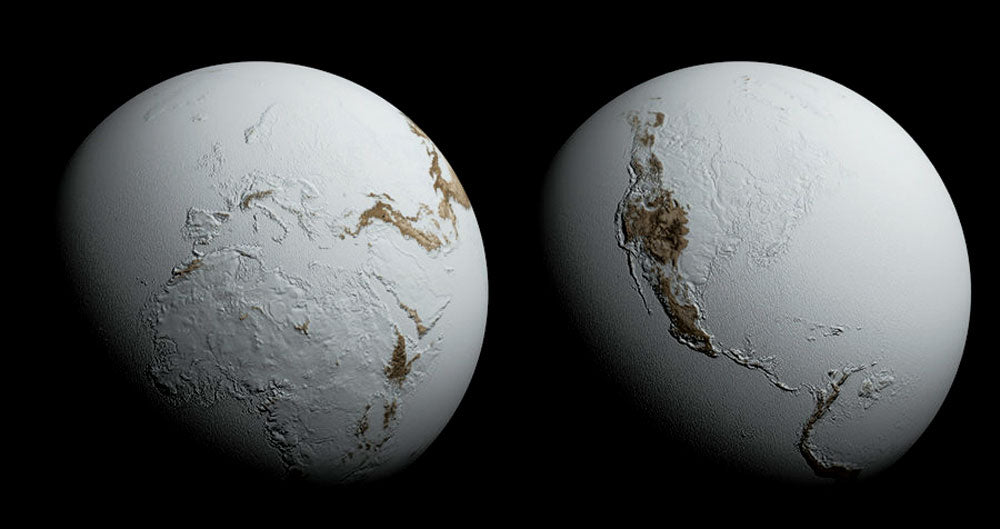
How Many Ice Ages Has The Earth Had, And Could Humans Live Through One?
Share
What is an ice age?
The term refers to long periods of cold temperatures on Earth - millions to tens of millions of years - which cause ice sheets and glaciers to cover large areas.
At least five ice ages have occurred on Earth. About 2 billion years ago, there was a first ice age that lasted about 300 million years. We are still technically in the most recent one, which began about 2.6 million years ago.
So why isn't the Earth covered in ice right now?
This is because we are in an "interglacial" period. In an ice age, temperatures fluctuate between colder and warmer conditions. Interglacial periods are characterized by warmer temperatures, while glacial periods are characterized by cooler temperatures. The most recent ice age's warm interglacial period began about 11,000 years ago.
What was it like during the ice age?

Cold.
When most people talk about the "ice age," they are usually referring to the last glacial period, which began about 115,000 years ago and ended about 11,000 years ago with the start of the current interglacial period.
During that time, the planet was much cooler than it is now. At its peak, when ice sheets covered most of North America, the average global temperature was about 8 degrees Celsius. That's 6 degrees C cooler than the global annual average today.
That difference might not sound like a lot, but it resulted in most of North America and Eurasia being covered in ice sheets. Earth was also much drier, and the sea level was much lower, since most of the Earth's water was trapped in the ice sheets. Steppes, or dry grassy plains, were common. So were savannas, or warmer grassy plains and deserts.
Many animals present during the ice age would be familiar to you, including brown bears, caribou and wolves. But there was also megafauna that went extinct at the end of the ice age, like mammoths, mastodons, sabre-toothed cats and giant ground sloths.
There are different ideas about why these animals went extinct. One is that humans hunted them into extinction when they came in contact with the megafauna.
Humans Lived Through The Ice Age

The ice age was experienced by people just like us. Approximately 300,000 years ago, Homo sapiens emerged in Africa and spread throughout the world.
Many people in Africa remained unaffected by the ice age due to the fact that they remained in Africa during the ice age. Some of them moved to cold, glacial environments in Europe.
They weren't the only ones. Throughout Eurasia, there were other species of hominins at the beginning of the ice age, such as the Neanderthals in Europe and the mysterious Denisovans in Asia. It appears that both of these groups went extinct before the ice age ended.
Hominin cousins of our species died out during the ice age, so there are many theories regarding how we survived. There are some who believe it has to do with our ability to adapt, and the way we use our social skills and communication tools. There's no evidence that humans hunkered down during the ice age. Instead, they relocated.
Humans were not thought to have entered North America until the ice sheets melted. Humans have been living in North America since at least 23,000 years ago, close to the peak of the last ice age, according to fossilized footprints found in White Sands National Park in New Mexico.
#Space_Aus




